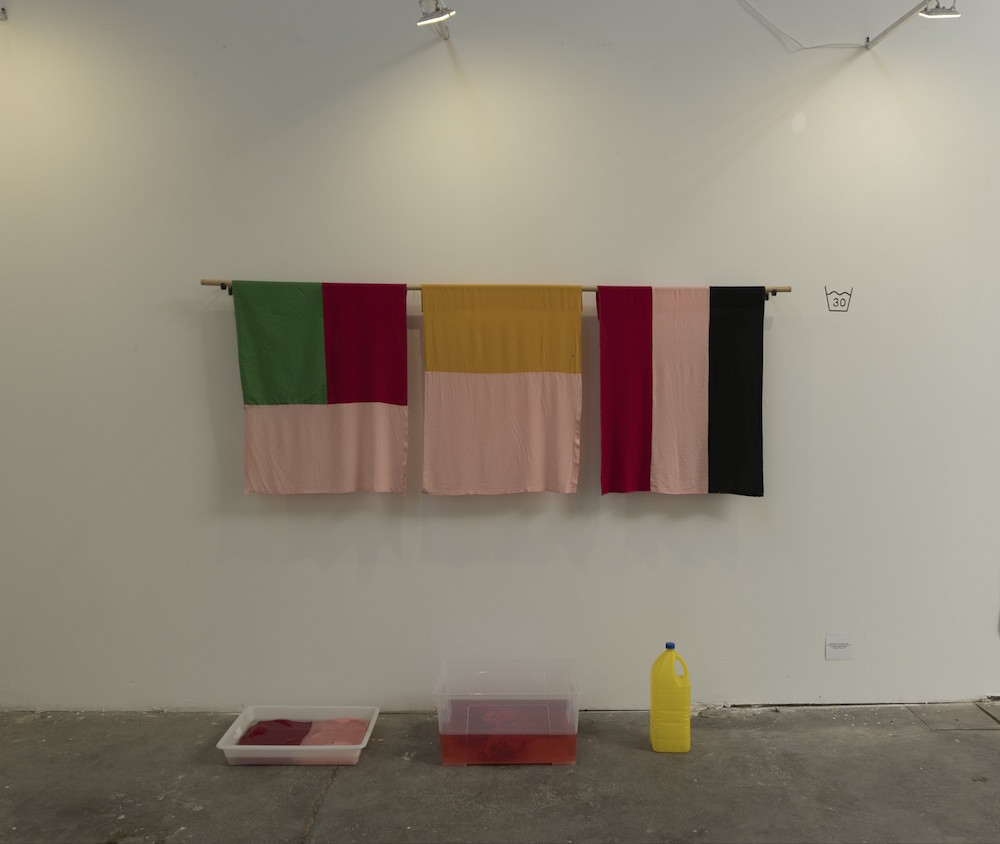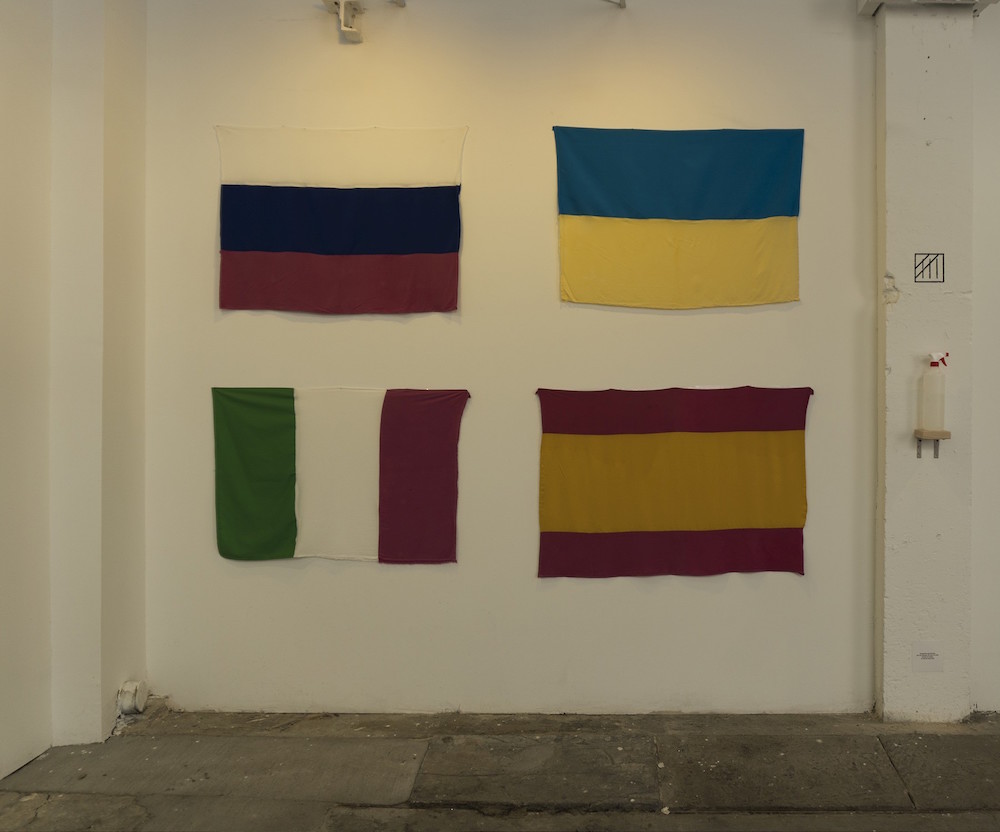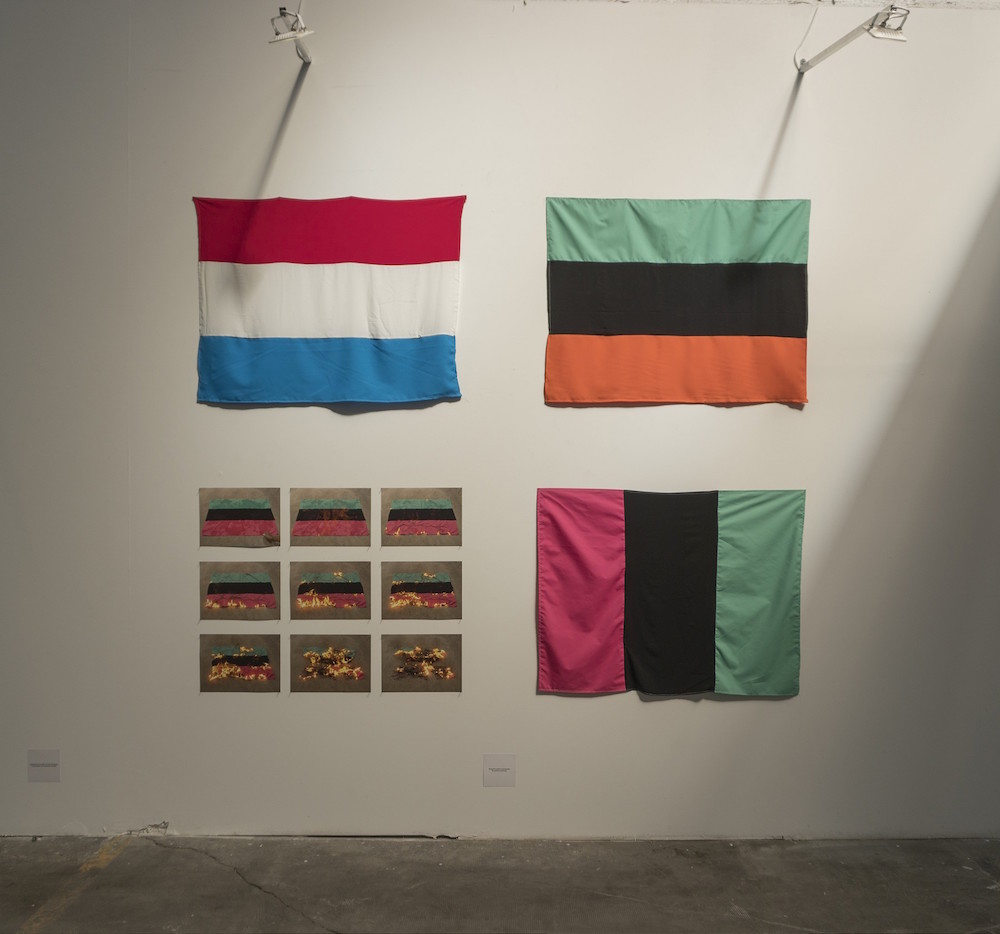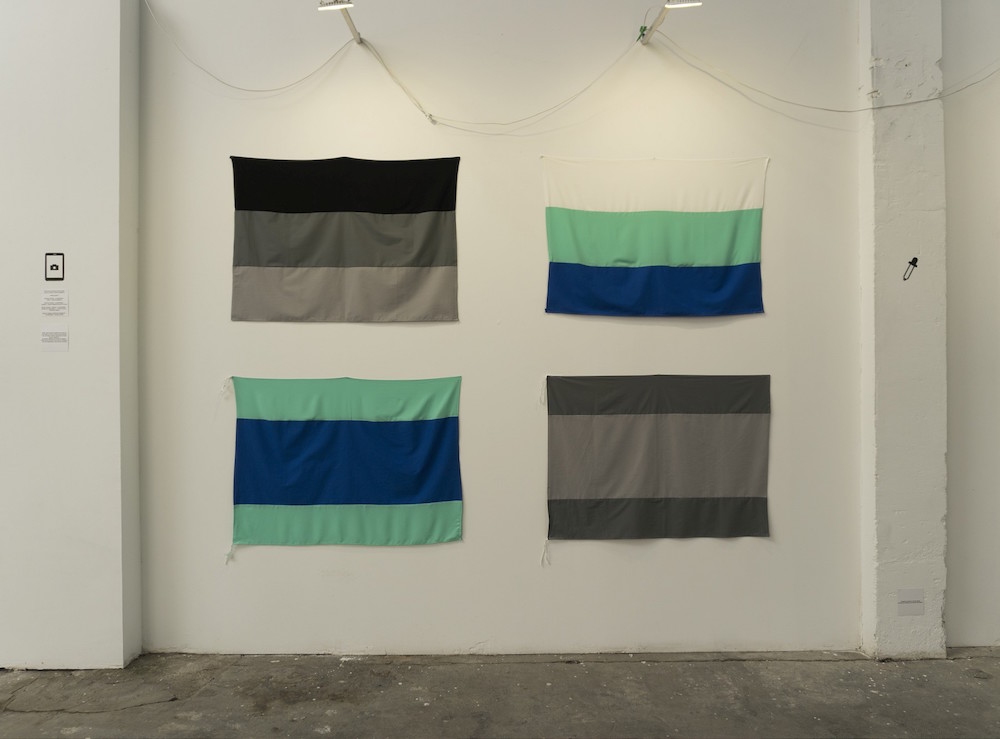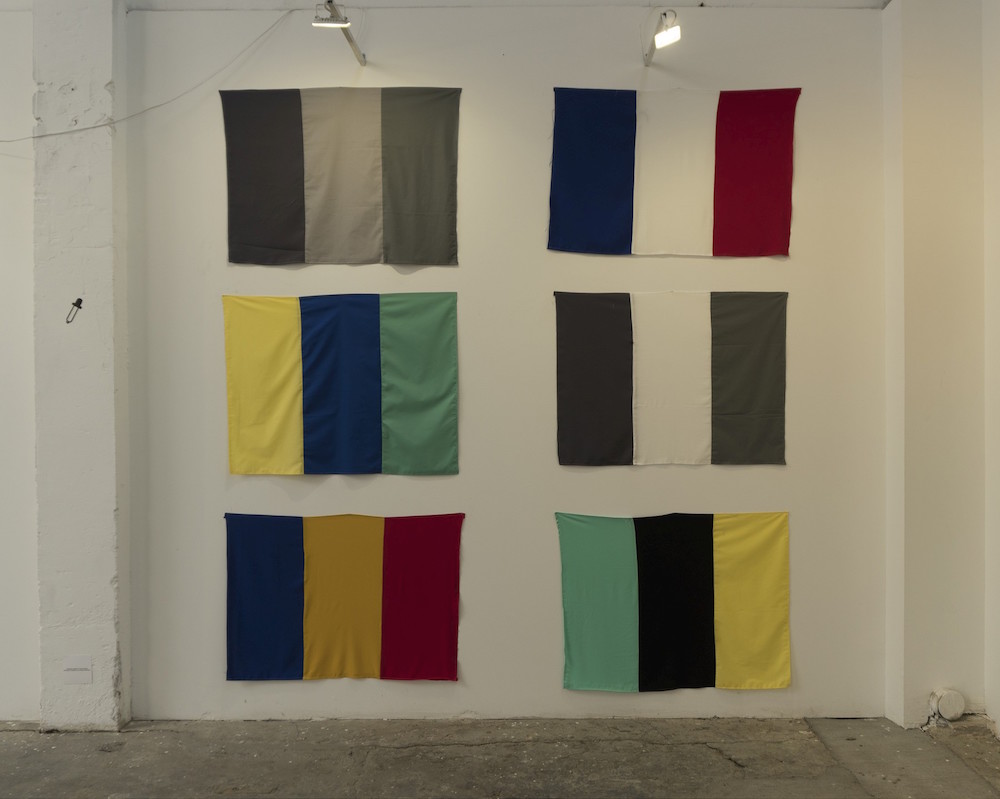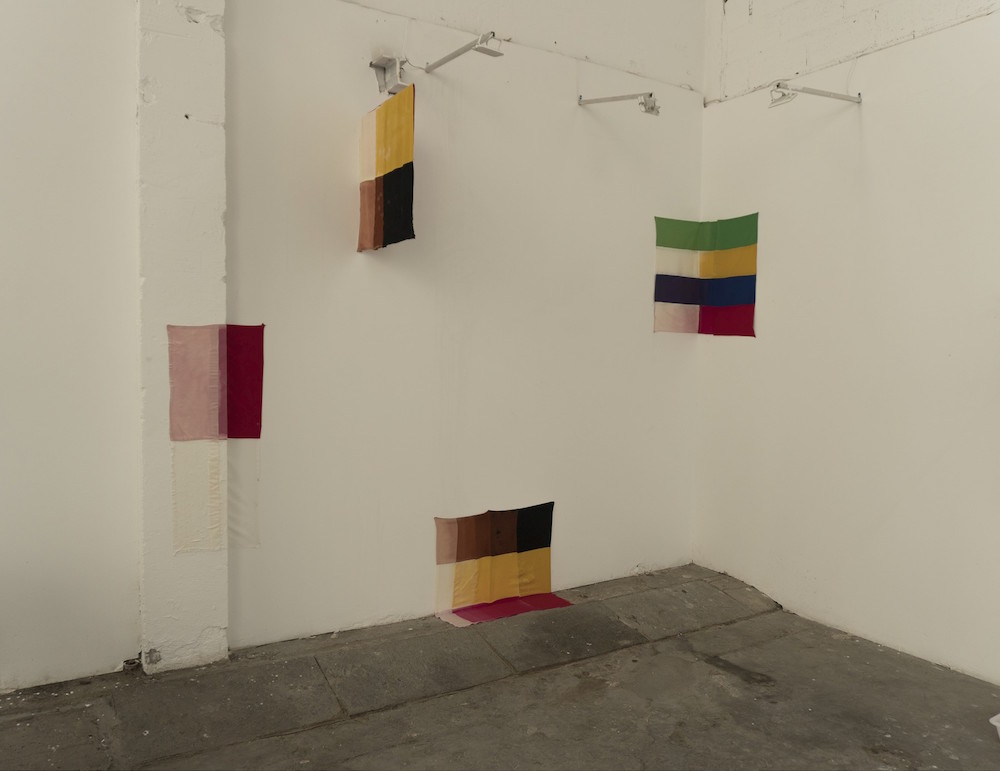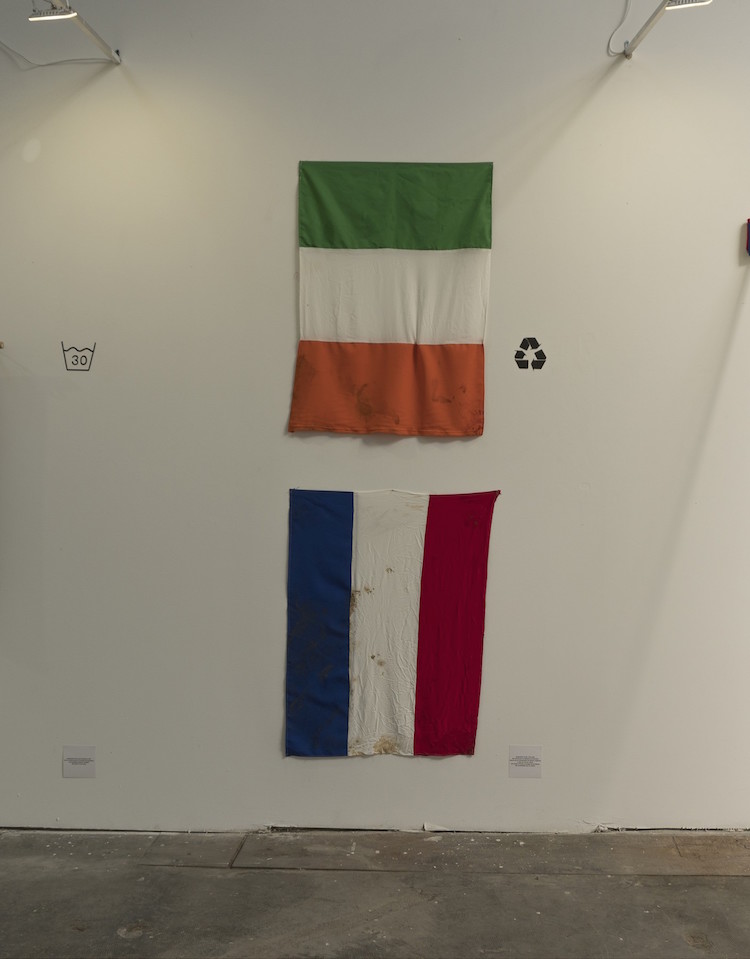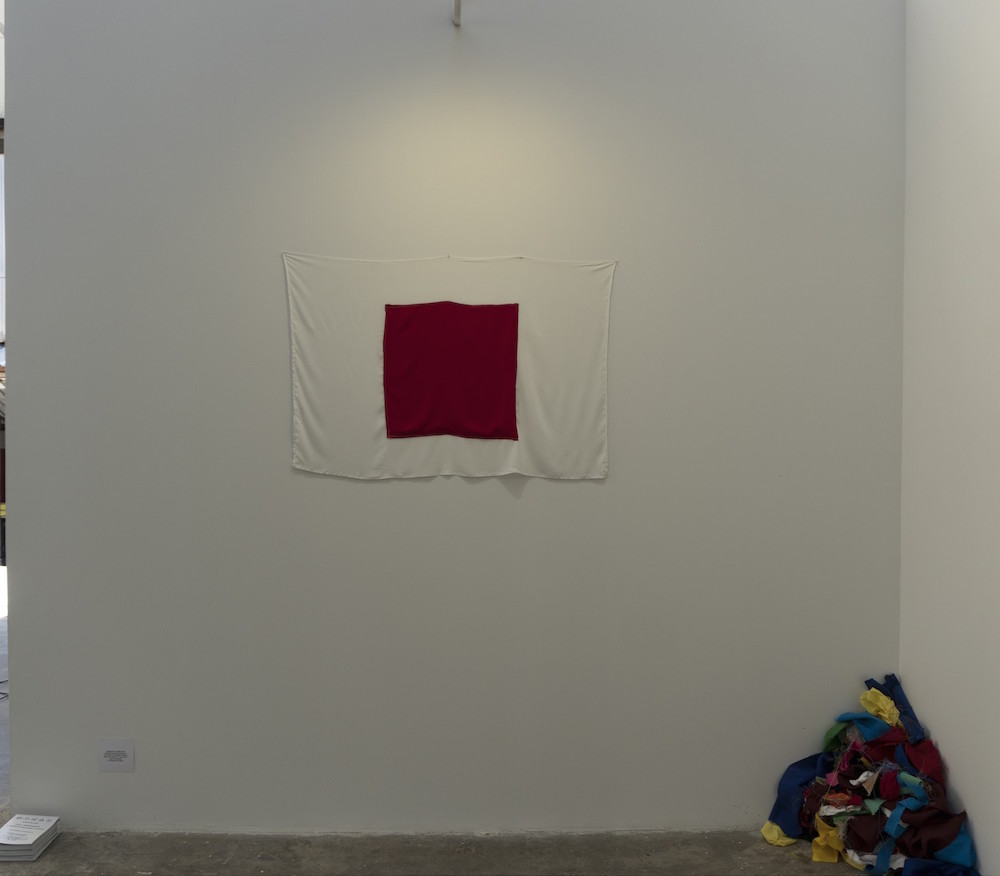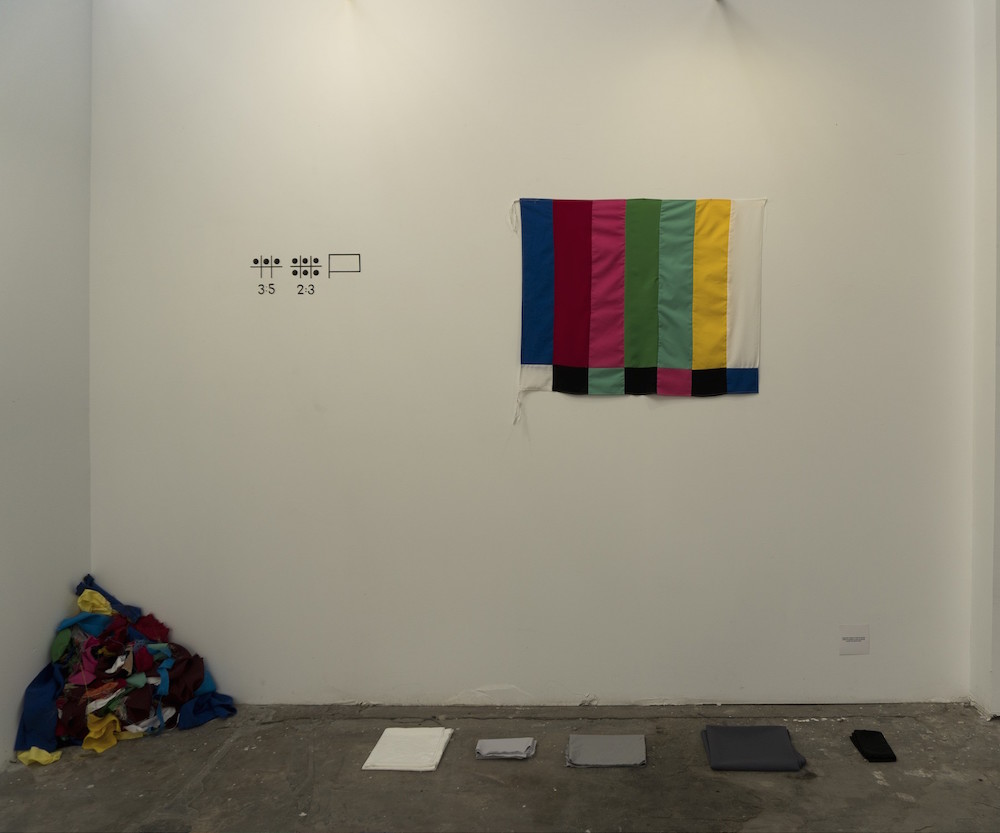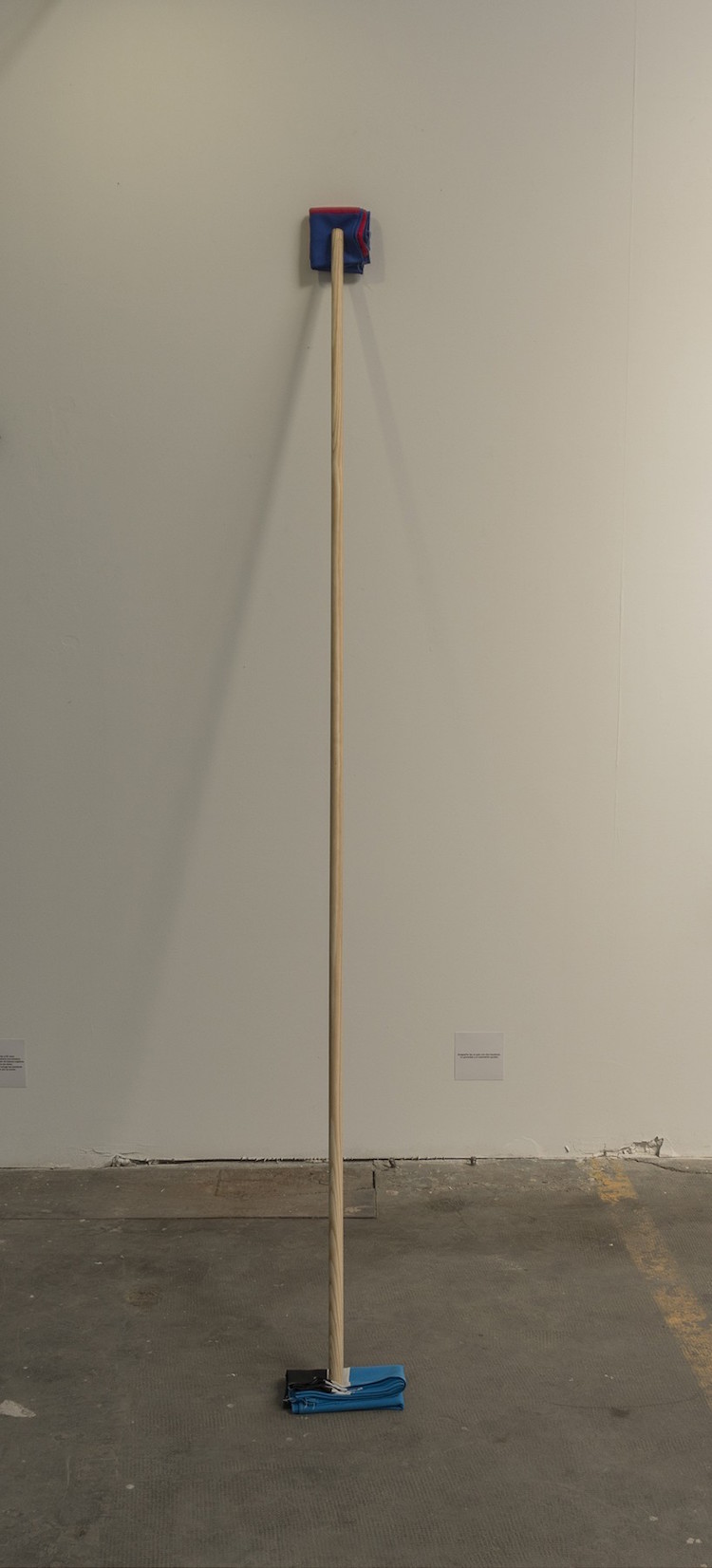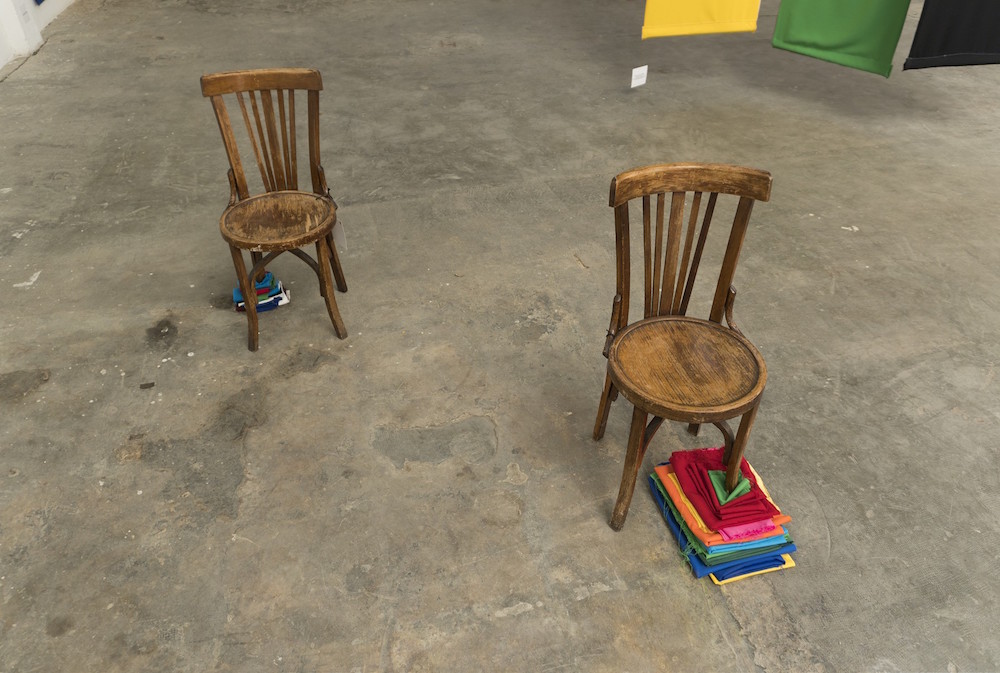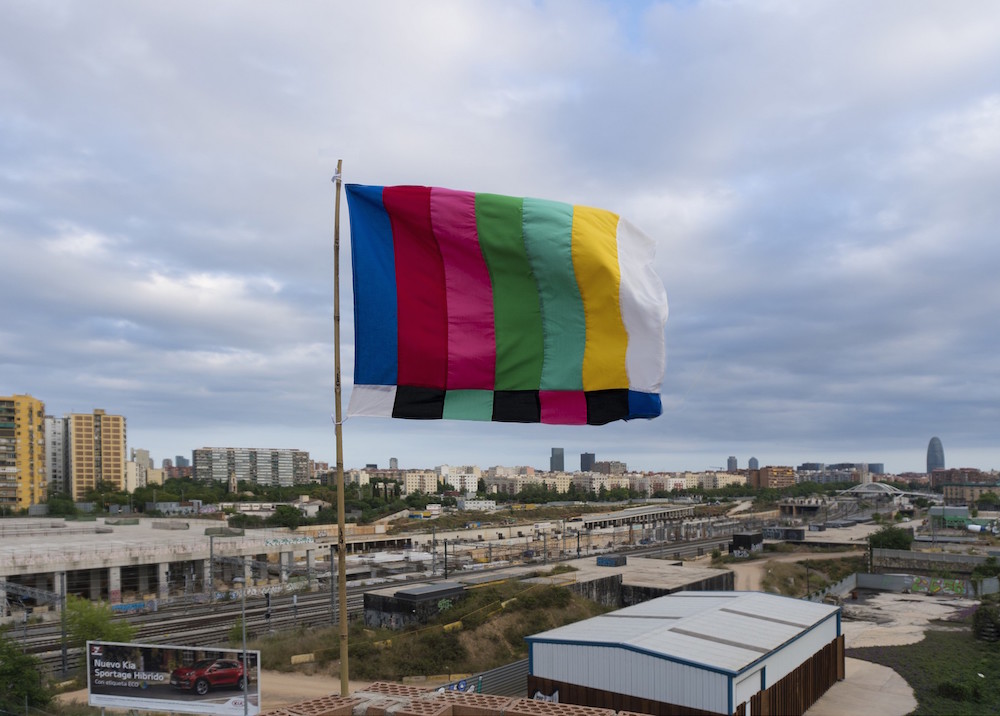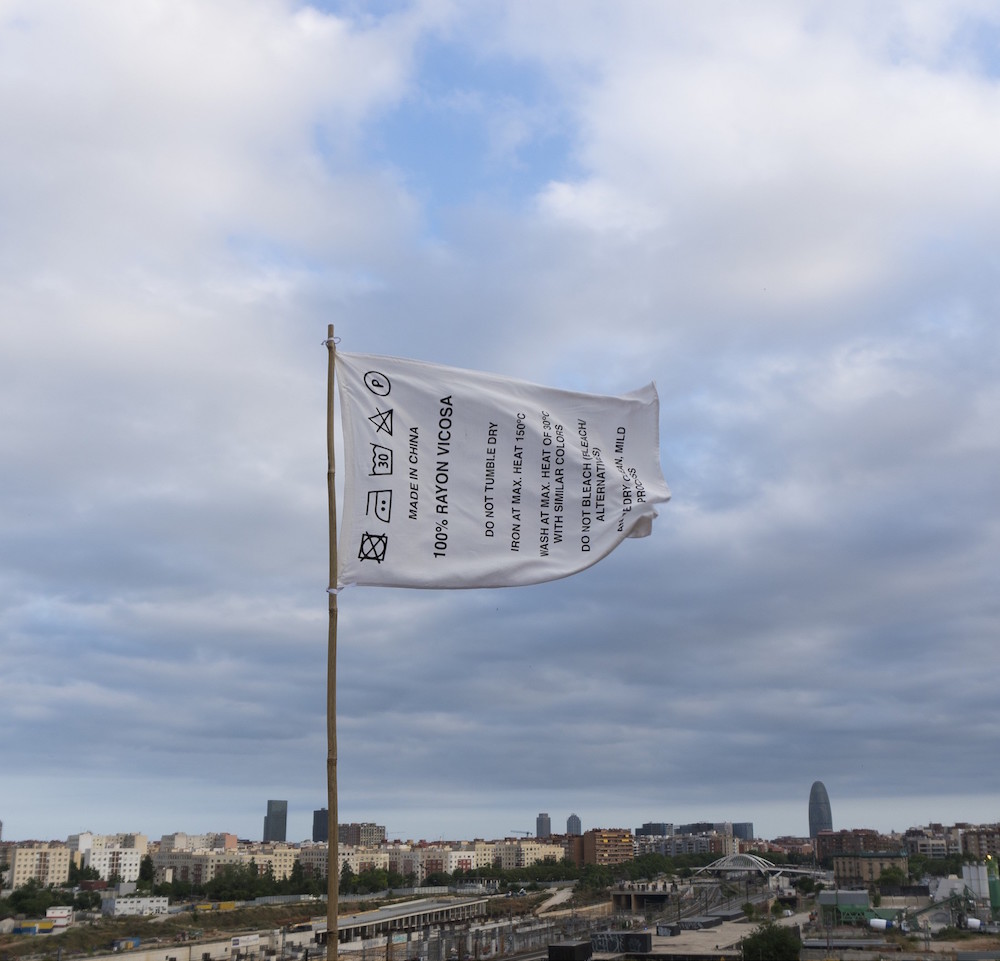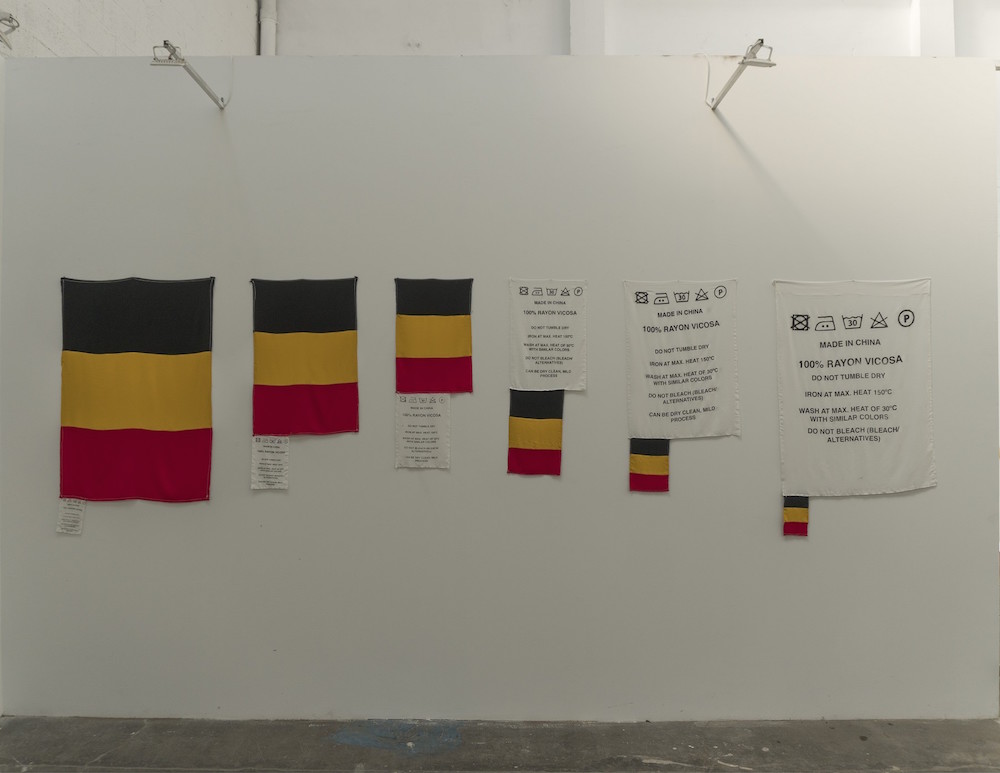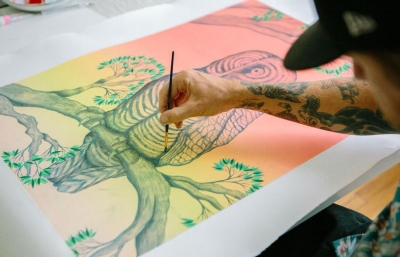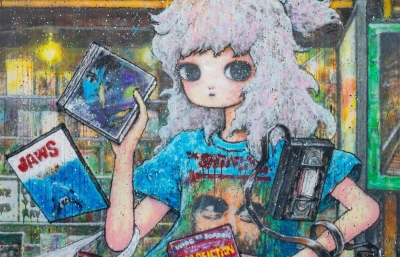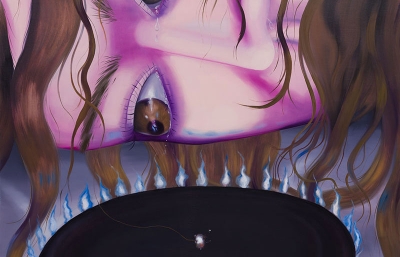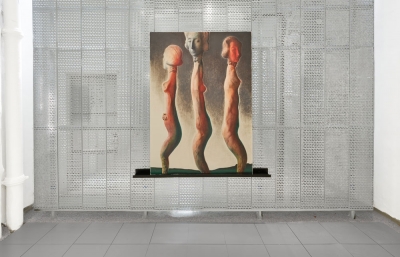Our friend Ampparito recently took a two-week residency at B-murals, a Barcelona artist space dedicated to street art, and once again reveled in his idiosyncratic and unconventional approach. Enjoying a chance to work on the spot, the Spanish artist developed and presented an original concept in an interactive way.
Utilizing the power of flags as potent, colorful symbols, Ampparito created a series of interventions with fabric to question meaning in relation to physical appearance Playing with scale, color choice, and technology, the Madrid-based artist constructs an interactive presentation that neutralizes the object's primary function while questioning its actual value.
Using a high-temperature wash to alter the original state, Ampparito creates a metaphor for real-world dynamics in which cultures and nations constantly intersect and mix. With a nod to the global economy, he blows up a laundry label, while simultaneously shrinking the size of the actual flag. Seeing the absurd in apparent reality, Ampparito plays with the role of flagpole and flag, amplifying it by raising two flags.

Ampparito also invited other artists to play with his planetary topic, and friends contributed with cosmic approaches to the concept. Octavi Serra created a mutable flag made of three huge pieces of fabric to reveal different flags when "activated" by the wind, while Nil Joan placed two flags in a bin in the morning and collected them after nine hours cohabitating with rubbish. Albert Gironès and Anna Vilamú designed a flag for the planet, approved by NASA and read for a send-off to Mars in 2030. The artists used balloons to raise the planet flag high into the sky for a memorable opening.
Altering the look of recognizable symbols of national power was arguably the most interesting and provocative part. By comparing the color schemes, shapes or sizes of certain flags, Ampparito questions the feelings and emotions connected to patriotism through a series of flags that reveal their meaning only when seen as an inverted image. Similarly, he built a color chart made of flags, asking viewers to decide the exact point the flag is not recognizable as such. After burning the negative flags and recording the process, which, when watched as an inverted image, documents of an illegal act, possibly actionable. Through such a simple act, he shows the fragility of national pride and power of this pervasive symbol––Sasha Bogojev

